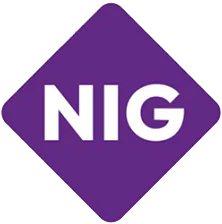We compare quotes from leading insurers
Protect Your Electronics and Technology Manufacturing Business with Specialist Insurance Coverage
Protecting Your Electronics and Technology Manufacturing Business
The electronics and technology manufacturing sector faces unique risks that standard business insurance simply cannot address. From sophisticated equipment worth millions to cyber security threats and product liability concerns, your high-tech operations require specialist insurance coverage designed specifically for the modern manufacturing environment.
At Insure24, we understand the complex challenges facing electronics manufacturers, semiconductor producers, circuit board manufacturers, and technology component suppliers. Our comprehensive insurance solutions are tailored to protect your valuable assets, maintain business continuity, and safeguard your reputation in this rapidly evolving industry.
Comprehensive Coverage for Electronics Manufacturing
High-Value Equipment Protection
- Clean room facilities and environmental systems
- Precision manufacturing equipment and machinery
- Testing and quality control instruments
- Computer-controlled production lines
- Semiconductor fabrication equipment
- Surface mount technology (SMT) lines
Business Interruption Insurance
- Loss of income during equipment breakdown
- Clean room contamination coverage
- Supply chain disruption protection
- Extended period of indemnity options
- Increased cost of working provisions
- Customer contract penalty coverage
Product Liability Protection
- Defective component claims
- Product recall expenses
- Design defect liability
- Manufacturing error coverage
- Worldwide territorial coverage
- Regulatory compliance costs
Cyber Security Insurance
- Industrial espionage protection
- Intellectual property theft coverage
- System downtime losses
- Data breach response costs
- Ransomware attack protection
- Supply chain cyber incidents
Professional Indemnity
- Design and specification errors
- Technical consultancy liability
- Intellectual property infringement
- Contract works coverage
- Third-party system integration
- Software development liability
Environmental Liability
- Chemical and solvent spills
- Waste disposal liability
- Contamination clean-up costs
- Regulatory fines and penalties
- Third-party environmental damage
- Groundwater contamination
Industry-Specific Risks We Cover
Manufacturing Risks
- Equipment Breakdown: Sophisticated manufacturing equipment failure causing production delays and costly repairs
- Clean Room Contamination: Environmental control system failures leading to product contamination and facility shutdown
- Power Surge Damage: Electrical fluctuations damaging sensitive electronic components and production equipment
- Temperature Fluctuations: Climate control failures affecting product quality and equipment performance
Supply Chain Vulnerabilities
- Component Shortages: Global semiconductor shortages affecting production schedules
- Supplier Failures: Key supplier bankruptcy or production issues disrupting your operations
- Transportation Delays: Shipping disruptions affecting just-in-time manufacturing processes
- Quality Control Issues: Defective components from suppliers affecting your final products
Technology and Cyber Risks
- Intellectual Property Theft: Industrial espionage targeting proprietary designs and processes
- System Hacking: Cyber attacks on production control systems and networks
- Data Breaches: Theft of customer data, design specifications, and trade secrets
- Ransomware Attacks: Malicious software disrupting production and demanding payment
Regulatory and Compliance Risks
- Environmental Regulations: Changing environmental standards affecting manufacturing processes
- Product Safety Standards: Evolving safety requirements for electronic products
- Export Controls: International trade restrictions affecting component sourcing and product distribution
- Data Protection Laws: GDPR and other privacy regulations affecting customer data handling
Why Choose Insure24 for Your Electronics Manufacturing Insurance?
- Industry Expertise - Our team understands the unique challenges facing electronics manufacturers, from semiconductor fabrication to consumer electronics assembly.
- Tailored Coverage - We design insurance solutions specifically for your manufacturing processes, equipment, and risk profile.
- Global Reach - Comprehensive coverage for international operations, supply chains, and product distribution networks.
- Risk Management Support - Access to specialist risk assessment services and loss prevention guidance for high-tech manufacturing environments.
- Claims Expertise - Dedicated claims handlers with technical knowledge of electronics manufacturing processes and equipment.
- Competitive Pricing - Access to specialist insurers offering competitive rates for well-managed electronics manufacturing operations.
How to Get Your Electronics Manufacturing Insurance Quote
- 1. Initial Consultation - Contact our specialist team to discuss your manufacturing operations, equipment, and specific risk exposures.
- 2. Risk Assessment - We'll conduct a comprehensive review of your facilities, processes, and insurance requirements.
- 3. Tailored Quotation - Receive a detailed insurance proposal designed specifically for your electronics manufacturing business.
- 4. Policy Implementation - Once approved, we'll implement your coverage and provide ongoing support and risk management advice.
Regulatory Compliance and Industry Standards
Electronics and technology manufacturing operates within a complex regulatory environment. Our insurance solutions help ensure compliance with:
Environmental Regulations
- RoHS (Restriction of Hazardous Substances)
- WEEE (Waste Electrical and Electronic Equipment)
- REACH (Registration, Evaluation, Authorization of Chemicals)
- Environmental permitting and waste management
Product Safety Standards
- CE marking requirements
- FCC electromagnetic compatibility standards
- IEC international electrotechnical standards
- ISO quality management systems
Data Protection
- GDPR compliance for customer data
- Industrial data security standards
- Intellectual property protection
- Export control regulations
Health and Safety
- COSHH (Control of Substances Hazardous to Health)
- Clean room safety protocols
- Electrical safety regulations
- Occupational health monitoring

"Insure24's understanding of our semiconductor manufacturing processes was impressive. They provided comprehensive coverage that standard insurers couldn't match, including protection for our clean room facilities and specialized equipment."
Manufacturing Director, Welsh Semiconductor CompanyWhy Choose Insure24 for Electronics and Technology Manufacturers Insurance?
- Specialist Knowledge - We understand the unique risks facing electrics and technology manufacturers operators
- Comprehensive Coverage - Multiple insurance products designed to work together
- Competitive Pricing - Tailored quotes based on your specific venue and operations
- Expert Support - Dedicated team available when you need us most
- Quick Claims - Fast response when incidents occur
- FCA Regulated - Authorized and regulated by the Financial Conduct Authority
Protect Your Electronics and Technology Manufacturing Business with Specialist Insurance Coverage
Get Your Electronics and Technology Manufacturers Insurance Quote Today
Don't leave your electrics and technology manufacturing business exposed to unnecessary risks.
Our specialist team will assess your venue's unique needs and provide a comprehensive insurance solution that protects your business, your customers, and your livelihood.
Call us now: 0330 127 2333
Or get an instant online quote at insure24.co.uk
FREQUENTLY ASKED QUESTIONS
+-
What types of electronics manufacturing businesses do you insure?
We provide insurance for all types of electronics manufacturers including semiconductor fabrication, printed circuit board assembly, consumer electronics production, automotive electronics, medical device manufacturing, telecommunications equipment, and specialized component suppliers.
+-
How do you value high-tech manufacturing equipment?
We work with specialist equipment valuers who understand the unique characteristics of electronics manufacturing machinery. This includes replacement cost valuation, technological obsolescence considerations, and the impact of rapid equipment depreciation in the technology sector.
+-
Does the policy cover clean room contamination incidents?
Yes, our policies include comprehensive clean room contamination coverage, including the costs of decontamination, product disposal, facility restoration, and business interruption losses during the clean-up period.
+-
What cyber security coverage is included for manufacturing systems?
Our cyber insurance covers industrial control system attacks, intellectual property theft, ransomware incidents, system downtime losses, data breach response costs, and supply chain cyber incidents that could affect your operations.
+-
How does product liability coverage work for electronic components?
Product liability coverage protects against claims arising from defective components, design flaws, manufacturing errors, and failure to meet specifications. This includes recall costs, legal defense expenses, and third-party damage claims.
+-
Are international operations and exports covered?
Yes, we provide worldwide coverage for your international operations, export activities, and global supply chain risks. This includes coverage for goods in transit, overseas facilities, and international product liability exposures.
+-
What happens if a key supplier fails or goes bankrupt?
Our supply chain coverage protects against supplier failure, including the additional costs of sourcing alternative suppliers, expedited shipping costs, and business interruption losses resulting from supply disruptions.
+-
How quickly can claims be processed for equipment breakdown?
We understand the critical nature of manufacturing downtime. Our claims team includes technical specialists who can assess equipment damage quickly, and we offer emergency repair authorization to minimize production delays.
+-
Does the policy cover environmental cleanup costs?
Yes, environmental liability coverage includes cleanup costs for chemical spills, solvent contamination, waste disposal issues, and regulatory fines. This is particularly important for electronics manufacturers using hazardous materials.
+-
What documentation is needed for a quote?
We'll need details of your manufacturing processes, equipment schedules, annual turnover, export markets, key suppliers, previous claims history, and any existing risk management procedures you have in place.
+-
Can you cover research and development activities?
Yes, we can extend coverage to include R&D operations, prototype development, testing facilities, and the unique risks associated with developing new electronic products and technologies.
+-
How do you handle intellectual property theft claims?
Our cyber and professional indemnity coverage includes protection against IP theft, industrial espionage, and unauthorized disclosure of proprietary information. This includes investigation costs, legal expenses, and loss of competitive advantage.
+-
What risk management support do you provide?
We offer access to specialist risk consultants who understand electronics manufacturing, including clean room protocols, equipment maintenance best practices, cyber security assessments, and supply chain risk management guidance.
+-
Are there any exclusions specific to electronics manufacturing?
Standard exclusions may include wear and tear, gradual deterioration, and certain cyber events. However, we work to minimize exclusions and can often provide coverage for risks that other insurers exclude through specialist policy wordings.
+-
How does business interruption coverage work for just-in-time manufacturing?
We understand the complexities of lean manufacturing and can provide coverage for the additional costs and lost profits resulting from supply chain disruptions, even when your own premises are not directly damaged.
+-
Can you cover contract manufacturing operations?
Yes, we provide specialized coverage for contract manufacturers, including bailee coverage for customer-owned materials, work-in-progress protection, and liability coverage for manufacturing services provided to third parties.
+-
What about coverage for obsolete or discontinued components?
We can include coverage for the additional costs of sourcing obsolete components following an insured loss, including reverse engineering costs and redesign expenses if original components are no longer available.
+-
How do you assess the risk profile of new technology manufacturers?
Our underwriters have extensive experience in emerging technologies. We assess factors including management experience, quality systems, financial stability, market position, and the specific risks associated with new manufacturing processes.
+-
Are there premium discounts for well-managed operations?
Yes, we offer premium reductions for manufacturers with excellent safety records, robust quality management systems, comprehensive risk management procedures, and strong financial performance.
+-
What support is available during the claims process?
Our claims team includes technical specialists who understand electronics manufacturing. We provide 24/7 emergency support, rapid damage assessment, and can arrange emergency repairs to minimize business interruption.
+-
Can you cover seasonal variations in production?
Yes, we can adjust coverage limits to reflect seasonal production patterns, ensuring you have adequate protection during peak manufacturing periods without paying for unnecessary coverage during slower periods.
+-
How often should coverage be reviewed?
We recommend annual reviews as a minimum, with additional reviews when you acquire new equipment, enter new markets, change manufacturing processes, or experience significant business growth.
+-
What happens if regulatory requirements change?
Our policies can include coverage for the additional costs of complying with new regulations, including product modifications, testing requirements, and certification costs that may arise during the policy period.
+-
Do you provide coverage for trade shows and exhibitions?
Yes, we can extend coverage to include your participation in trade shows, including transit coverage for demonstration equipment, public liability at exhibitions, and protection for prototype products on display.
+-
How do you handle multi-site manufacturing operations?
We can provide blanket coverage across multiple sites or tailor individual coverage for each location based on their specific risks, ensuring comprehensive protection for your entire manufacturing network.
+-
What training and support do you offer for risk management?
We provide access to specialist training programs, risk assessment tools, and best practice guidance specifically designed for electronics manufacturers, helping you reduce risks and potentially lower insurance costs.
+-
What is the average cost of electronics manufacturing insurance in the UK?
Insurance costs vary significantly based on factors including annual turnover, equipment values, manufacturing processes, and risk profile. Typically, premiums range from 0.5% to 3% of annual turnover for comprehensive coverage. High-risk operations or those with valuable clean room facilities may pay more, while well-managed operations with strong safety records often qualify for reduced rates.
+-
Do I need separate insurance for semiconductor manufacturing?
Semiconductor manufacturing requires specialized coverage due to the extreme precision required, high equipment values, and contamination risks. Standard manufacturing insurance often excludes clean room operations, making specialist semiconductor insurance essential for fab facilities, wafer processing, and chip assembly operations.
+-
How does insurance cover supply chain disruption in electronics manufacturing?
Supply chain coverage protects against losses when key suppliers fail to deliver critical components. This includes coverage for expedited shipping costs, alternative supplier sourcing, production delays, and lost profits. Given the global nature of electronics supply chains, this coverage is particularly important for manufacturers dependent on specific components.
+-
What insurance is required for PCB (Printed Circuit Board) manufacturing?
PCB manufacturers need comprehensive coverage including equipment breakdown (for SMT lines and wave soldering equipment), product liability (for defective boards), professional indemnity (for design errors), environmental liability (for chemical processes), and cyber insurance (for design file protection).
+-
Are there specific insurance requirements for medical device electronics manufacturing?
Medical device manufacturers face stricter regulatory requirements and higher liability exposures. Insurance must cover FDA/MHRA compliance costs, clinical trial liability, product recall expenses, and enhanced product liability limits. Coverage should also include regulatory defense costs and loss of regulatory approval protection.
+-
How does business interruption insurance work for 24/7 manufacturing operations?
For continuous operations, business interruption coverage calculates losses based on your actual production schedules and shift patterns. This includes coverage for lost production during equipment breakdown, the additional costs of maintaining operations at alternative facilities, and overtime costs to catch up on lost production.
+-
What insurance coverage addresses the risks of electronics manufacturing workforce challenges?
Skilled workforce shortages create risks including production delays, quality issues from inexperienced workers, increased training costs, and higher accident rates. Insurance should cover the additional costs of maintaining production standards during workforce challenges and the risks associated with rapid staff turnover.
+-
How does insurance cover temperature-sensitive electronics manufacturing processes?
Temperature-sensitive operations require specialized coverage for climate control system failures, product spoilage from temperature excursions, equipment damage from thermal shock, and business interruption from environmental control breakdowns. This is critical for semiconductor fabrication and precision component assembly.
+-
What insurance is required for electronics manufacturers using hazardous chemicals?
Chemical-intensive processes need environmental liability coverage, worker safety protection, chemical spill cleanup costs, regulatory compliance coverage, and third-party contamination claims. Coverage should also include emergency response costs and business interruption from chemical incidents.
+-
How does insurance address the risks of electronics manufacturing equipment leasing?
Leased equipment creates unique insurance requirements including bailee coverage for leased assets, gap coverage between lease requirements and standard policies, return condition guarantees, and liability for equipment modifications. Coverage should protect both the manufacturer and the leasing company's interests.
+-
What insurance coverage is needed for electronics manufacturers with multiple production shifts?
Multi-shift operations require 24/7 coverage, enhanced security protection for unmanned periods, shift handover liability, and coverage for accidents during night shifts. Business interruption calculations must account for round-the-clock production schedules and varying shift productivity levels.
+-
How does insurance cover the risks of electronics manufacturing joint ventures?
Joint venture operations need shared liability coverage, intellectual property protection agreements, cross-indemnification provisions, and coverage for partnership dissolution risks. Insurance should clearly define each party's responsibilities and protect against conflicts between joint venture partners.
+-
What insurance considerations apply to electronics manufacturers using cloud-based systems?
Cloud-dependent operations require cyber coverage for cloud service outages, data breach protection for cloud-stored information, business interruption from cloud failures, and liability for cloud security breaches. Coverage should address both your systems and third-party cloud provider risks.
+-
How does insurance cover the transition from prototype to mass production in electronics manufacturing?
Production scaling creates risks including equipment scaling failures, quality control challenges, supply chain capacity issues, and regulatory approval delays. Insurance should cover the additional costs and potential losses during the critical transition from development to full production.
+-
What insurance is needed for electronics manufacturers developing defense or aerospace components?
Defense contractors require enhanced security clearance protection, export control compliance coverage, government contract performance bonds, and specialized product liability for mission-critical components. Coverage must meet stringent government requirements and security standards.
+-
How does insurance address the risks of electronics manufacturing mergers and acquisitions?
M&A activities create risks including due diligence errors, integration failures, cultural clashes, and legacy liability exposures. Insurance should provide representations and warranties coverage, integration cost protection, and coverage for unknown liabilities from acquired companies.
+-
What insurance coverage is required for electronics manufacturers using renewable energy systems?
Renewable energy installations require specialized coverage for solar panels, wind systems, battery storage, and grid connection equipment. Coverage should include weather-related damage, equipment breakdown, performance guarantees, and business interruption from renewable energy system failures.
+-
How does insurance cover the risks of electronics manufacturing research partnerships with universities?
University partnerships create unique risks including intellectual property ownership disputes, student researcher liability, shared facility risks, and technology transfer complications. Insurance should protect both commercial and academic interests while covering collaborative research activities.
+-
What insurance is needed for electronics manufacturers implementing Industry 4.0 technologies?
Smart manufacturing systems require cyber coverage for connected devices, data analytics liability, predictive maintenance failures, and digital twin system errors. Coverage should address the convergence of operational technology (OT) and information technology (IT) systems.
+-
How does insurance cover the risks of electronics manufacturing facility relocations?
Facility moves create risks including equipment damage during transport, installation errors, production delays, and temporary facility exposures. Insurance should cover the entire relocation process from packing through commissioning at the new location.
+-
What insurance coverage addresses the risks of electronics manufacturing trade secret protection?
Trade secret protection requires comprehensive cyber coverage, employee dishonesty protection, visitor liability coverage, and intellectual property theft insurance. Coverage should protect against both internal and external threats to proprietary manufacturing processes and designs.
+-
How does insurance cover the risks of electronics manufacturing equipment retrofits and upgrades?
Equipment modifications create risks including compatibility issues, performance degradation, warranty voidance, and integration failures. Insurance should cover the costs of unsuccessful upgrades, equipment damage during modification, and business interruption from retrofit delays.
+-
What insurance is required for electronics manufacturers using artificial intelligence for quality control?
AI quality systems require specialized coverage for algorithm errors, false positive/negative results, training data bias, and automated decision failures. Coverage should protect against the unique risks of AI systems making critical quality control decisions without human oversight.
+-
How does insurance address the risks of electronics manufacturing supply chain transparency requirements?
Supply chain transparency regulations create risks including compliance failures, supplier audit costs, traceability system failures, and regulatory penalties. Insurance should cover the costs of maintaining supply chain visibility and the risks of transparency requirement violations.
+-
What insurance coverage is needed for electronics manufacturers developing quantum technologies?
Quantum technology development requires specialized coverage for experimental equipment, research facility protection, intellectual property security, and regulatory uncertainty. Coverage should address the unique risks of cutting-edge quantum electronics research and development.
+-
How does insurance cover the risks of electronics manufacturing digital transformation initiatives?
Digital transformation creates risks including system integration failures, data migration errors, cybersecurity vulnerabilities, and employee training challenges. Insurance should cover the costs and risks associated with modernizing legacy manufacturing systems.
+-
What insurance is required for electronics manufacturers implementing circular economy principles?
Circular economy initiatives require coverage for product take-back programs, recycling facility operations, remanufacturing processes, and extended producer responsibility compliance. Coverage should address the unique risks of sustainable manufacturing business models.
+-
How does insurance cover the risks of electronics manufacturing blockchain implementation?
Blockchain systems require cyber coverage for distributed ledger failures, smart contract errors, cryptocurrency exposures, and supply chain tracking system failures. Coverage should address both the technology risks and the business process changes from blockchain adoption.
+-
What insurance coverage addresses the risks of electronics manufacturing edge computing deployments?
Edge computing creates risks including distributed system failures, data synchronization errors, remote device security breaches, and network connectivity issues. Insurance should cover the unique challenges of managing computing resources at the manufacturing edge.
+-
How does insurance cover the risks of electronics manufacturing predictive maintenance systems?
Predictive maintenance systems require coverage for sensor failures, algorithm errors, false maintenance alerts, and unexpected equipment breakdowns despite predictions. Coverage should protect against both system failures and the consequences of incorrect maintenance predictions.
+-
What insurance is needed for electronics manufacturers developing flexible and printed electronics?
Flexible electronics manufacturing requires specialized coverage for novel materials, experimental processes, unique contamination risks, and intellectual property protection. Coverage should address the emerging risks of next-generation electronics manufacturing technologies.


 0330 127 2333
0330 127 2333






